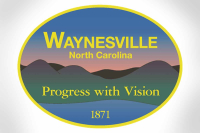Land donation protects key Roan Highlands landscape

A record-setting land donation will conserve 7,500 acres in the Roan Highlands, a success that Southern Appalachian Highland Conservancy Stewardship Director Marquette Crockett describes as a “conservationist’s dream come true.”
“Pristine roadless land that has not been timbered over is almost impossible to find in the Southern Appalachians in 2021, but this assemblage contains so much that we value, from old growth forests to high-elevation open areas in an undisturbed condition,” she said. “My phone will ring off the hook from biologists who want to visit and study this unparalleled preserve. We look forward to welcoming them to the mountain.”
SAHC announced April 22 that it had signed a letter of intent to accept the donation from an unnamed conservation philanthropist. Executive Director Carl Silverstein said that the gift was the largest in SAHC’s history, and as far as he’s aware the largest single land donation to a land trust anywhere.
“As we watch so much of our region get carved into subdivisions, strategic acquisition of large parcels of land is increasingly important — and increasingly hard to accomplish,” he said. “In twenty years this gift might be one of the few sites in Western North Carolina that still looks like it looked one hundred years ago, or one thousand years ago.”
The tract lies in the southern end of the planning boundary of the Yellow Mountain State Natural Area, a special conservation area designated by the N.C. General Assembly in 2008 to protect the exceptional natural features found there. The land rises to 5,300 feet in elevation and straddles the border of Avery and Mitchell counties, supporting numerous threatened and endangered plant and animal species and including the largest American chestnut restoration project in the country. As well as scenic views, it boasts extensive boulder fields, rich coves, old growth forest, six waterfalls and a system of rare heath balds.
SAHC expects to complete the land transfer within the next year. Afterward, the land trust will retain ownership and manage it as a nature preserve, also hosting guided hikes on the property and collaborating with the donor to use it for ongoing scientific study.





